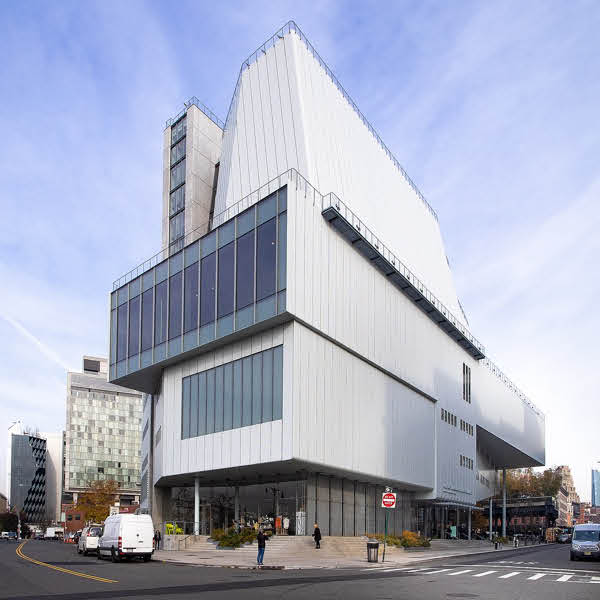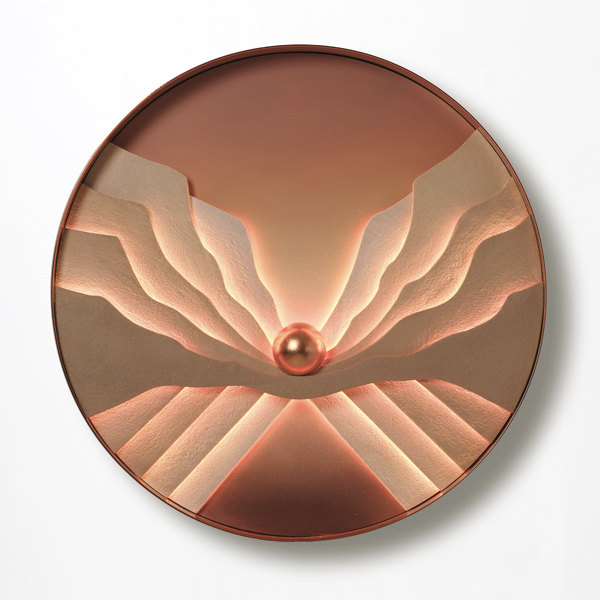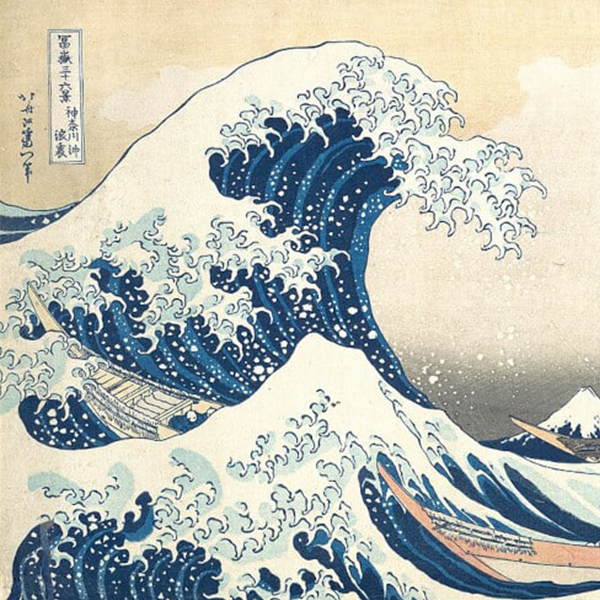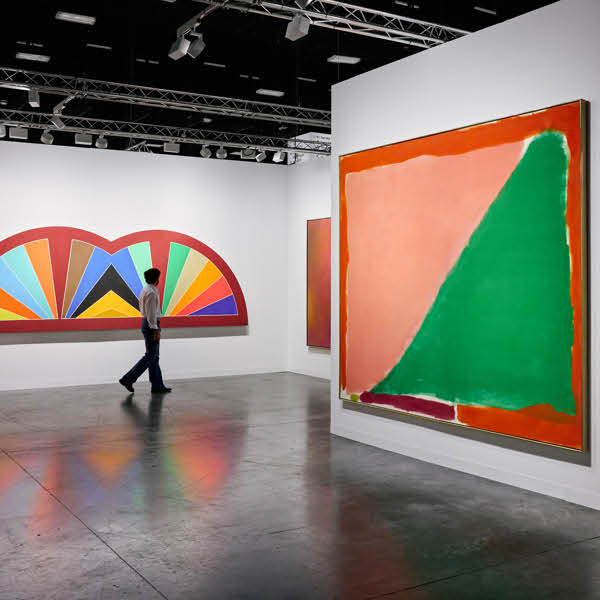
Thai artist Narong is carrying a long tradition with his elaborate carved soaps. Delicately carving out intricate patterns in the soft medium, he's able to achieve incredibly complex designs. Soap carving has a long tradition in Thailand, originating from the act of sculpting fruit and vegetables.
The artform comes from Sukothai which, starting in the 13th century, was the historic capital of the Thai Empire for almost 150 years. History tells us that in preparation for the Loi Krathong festival, one of the King's servants named Nang Noppamart thought about how she could improve her decorations. As the festival calls for decorated baskets to float on a river, she carved a flower and bird to enhance her basket, sparking a tradition.
Narong's work thus comes from a long cultural heritage. Though soap and vegetable carving fell out of popularity after the 1932 Siamese revolution, it is now gaining in popularity with young children often taught the craft in school. From more traditional floral patterns and dragons to contemporary figures, Narong is pushing the limits of what is possible with soap carving.
These incredible soap sculptures carry on the long tradition of Thai soap carving.
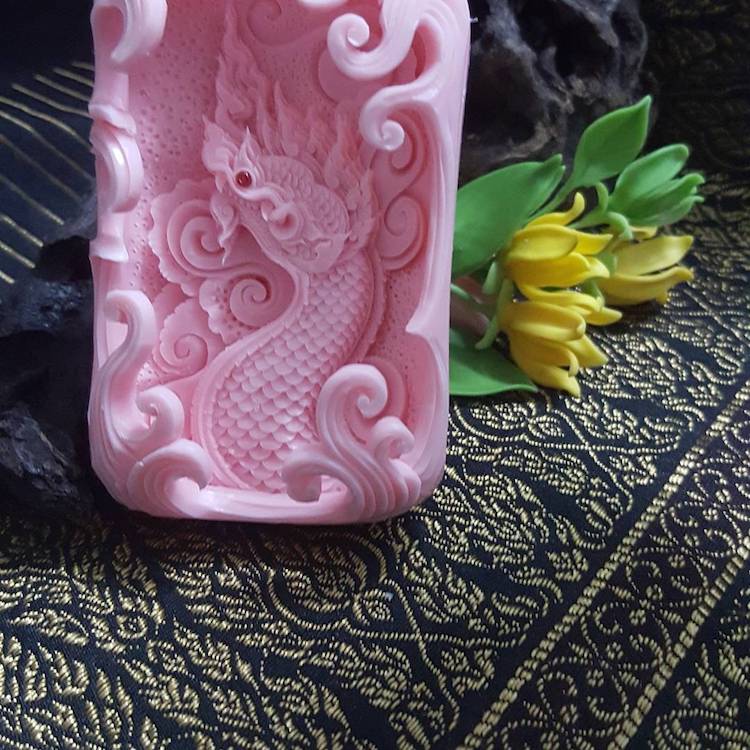
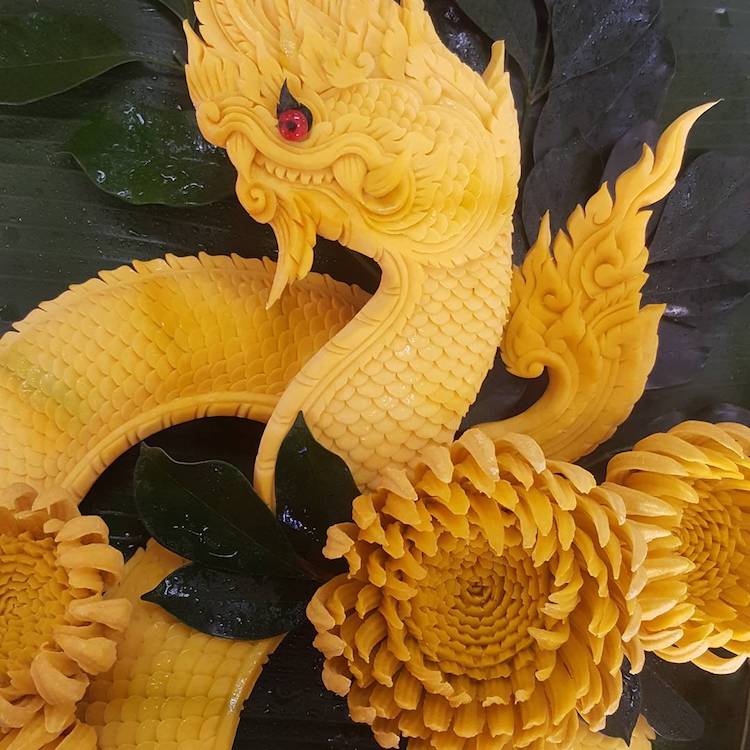
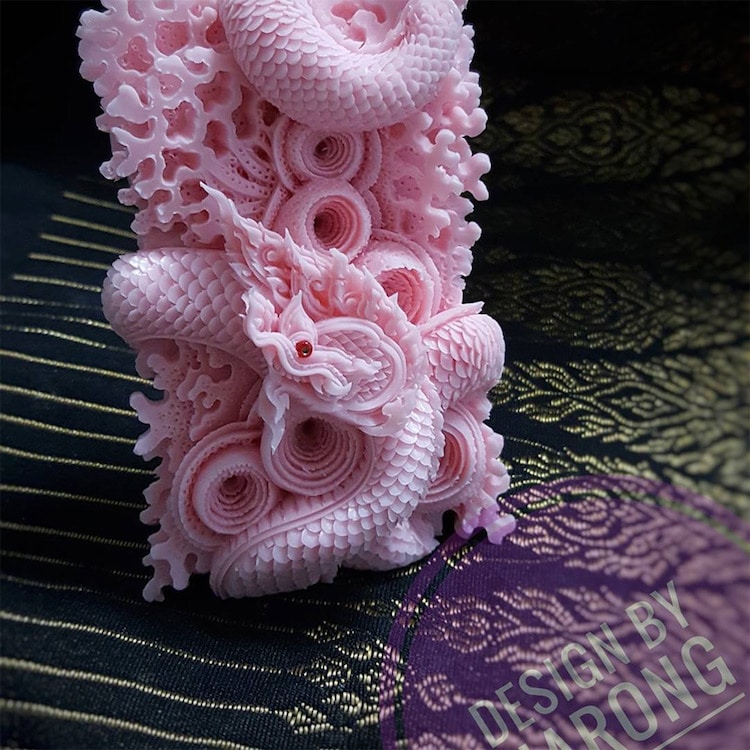
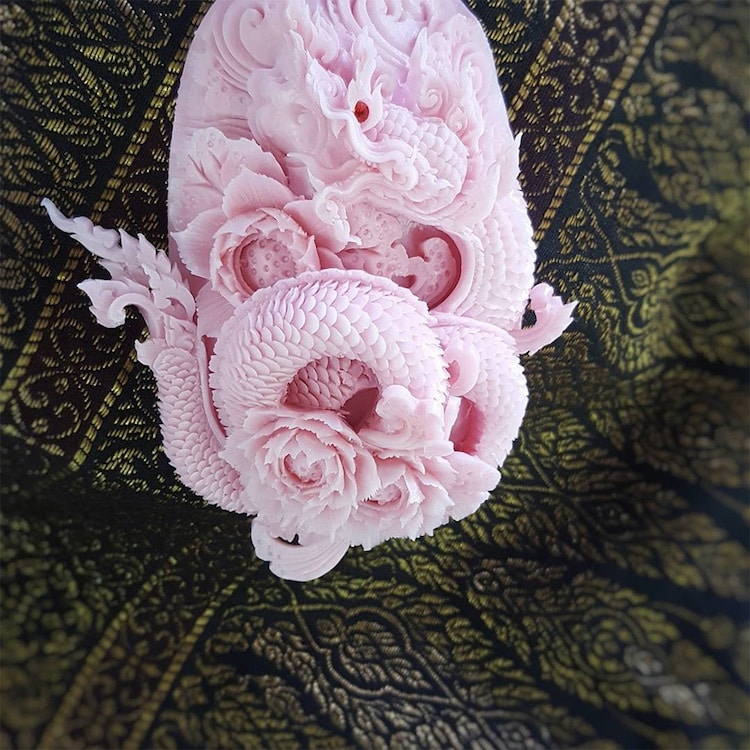
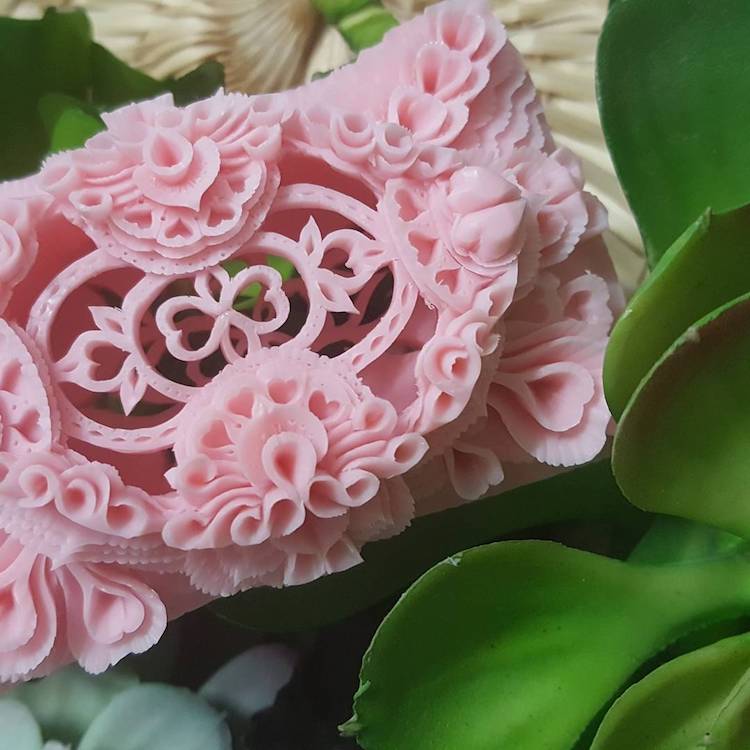

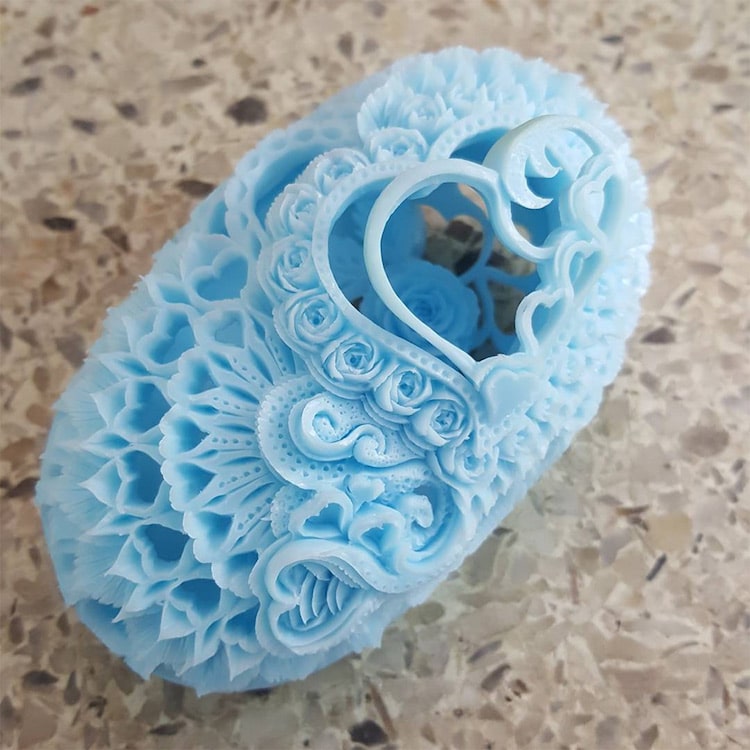

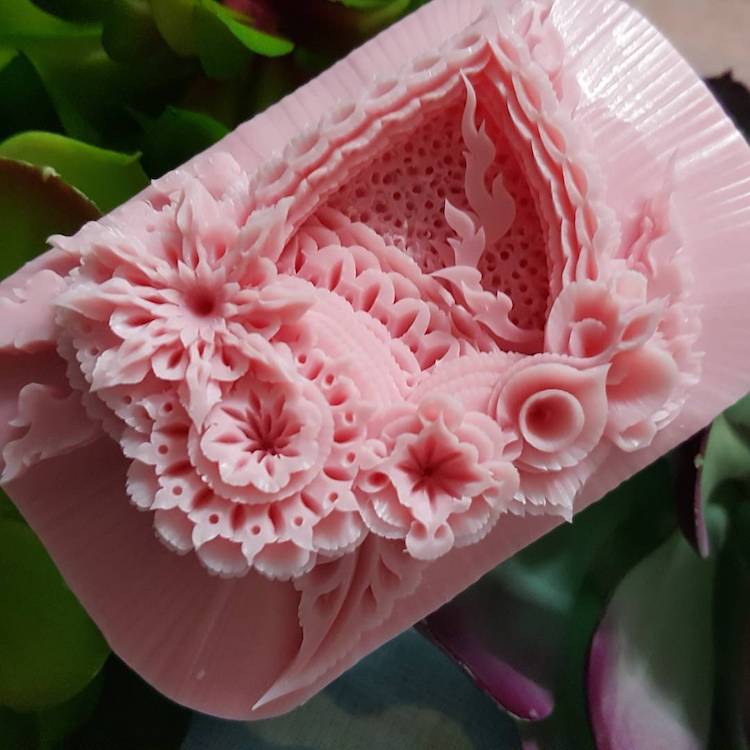
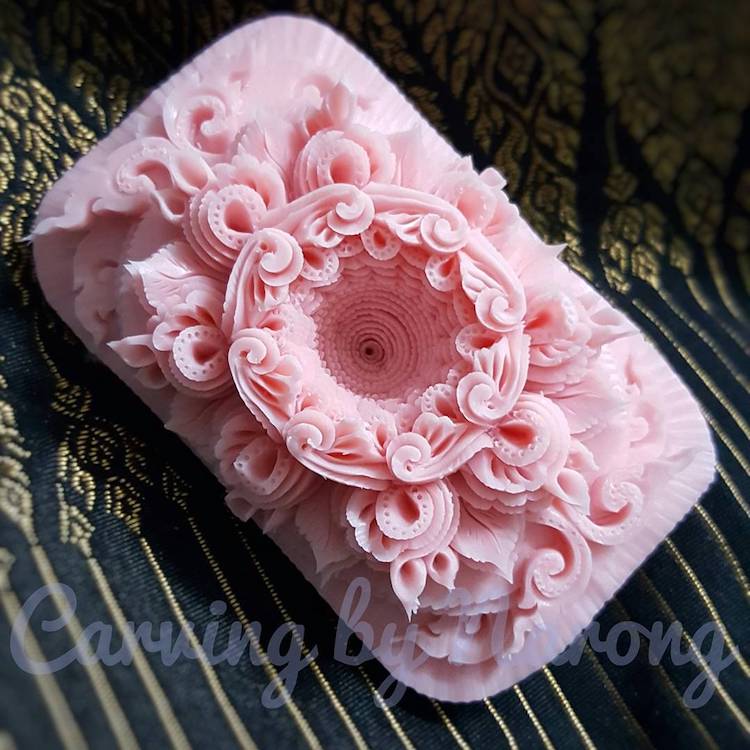

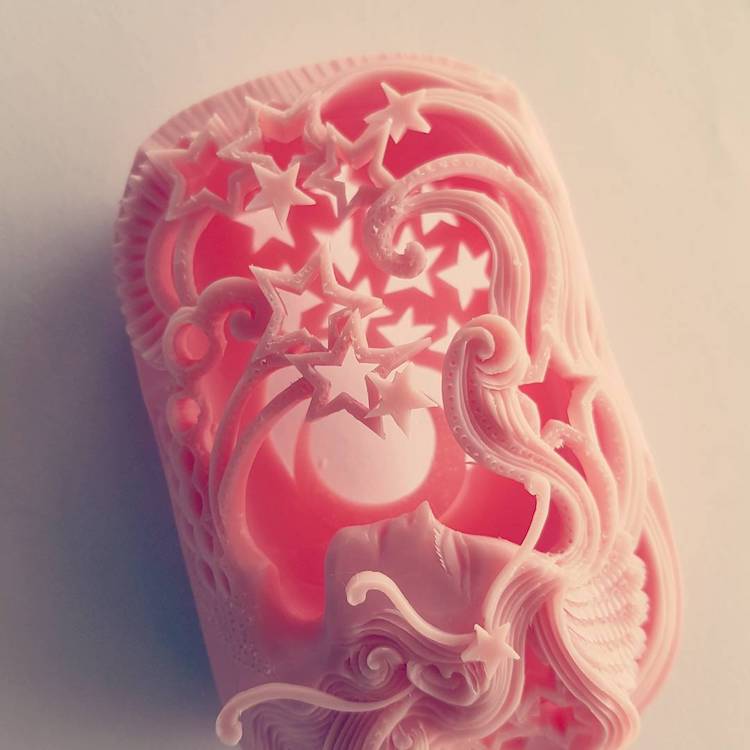
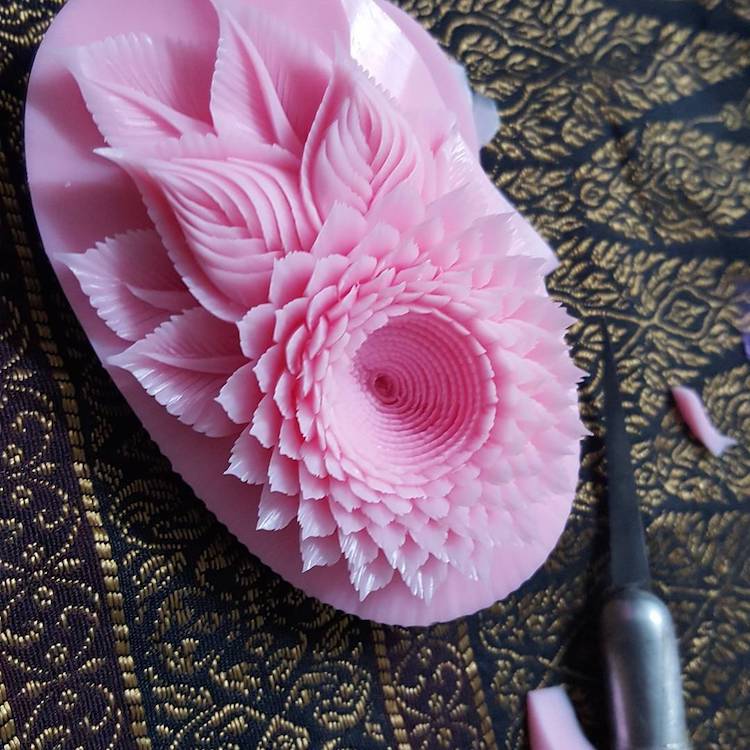
Narong: Instagram
h/t: [Colossal]
All images via Narong.
Related Articles:
Artist Transforms Food into Striking Sculptures, Eats His Work Afterwards
New Elaborately Carved Food Transforms Produce into Works of Art
Artist Transforms Ordinary Bananas Into Whimsical Works of Art
21 Watermelon Sculptures That Are Too Skillfully Crafted to Eat
Incredibly Intricate Sculptures Carved from the Tips of Pencils
16th Century Gothic Boxwood Miniatures With Extremely Detailed Carvings














































































